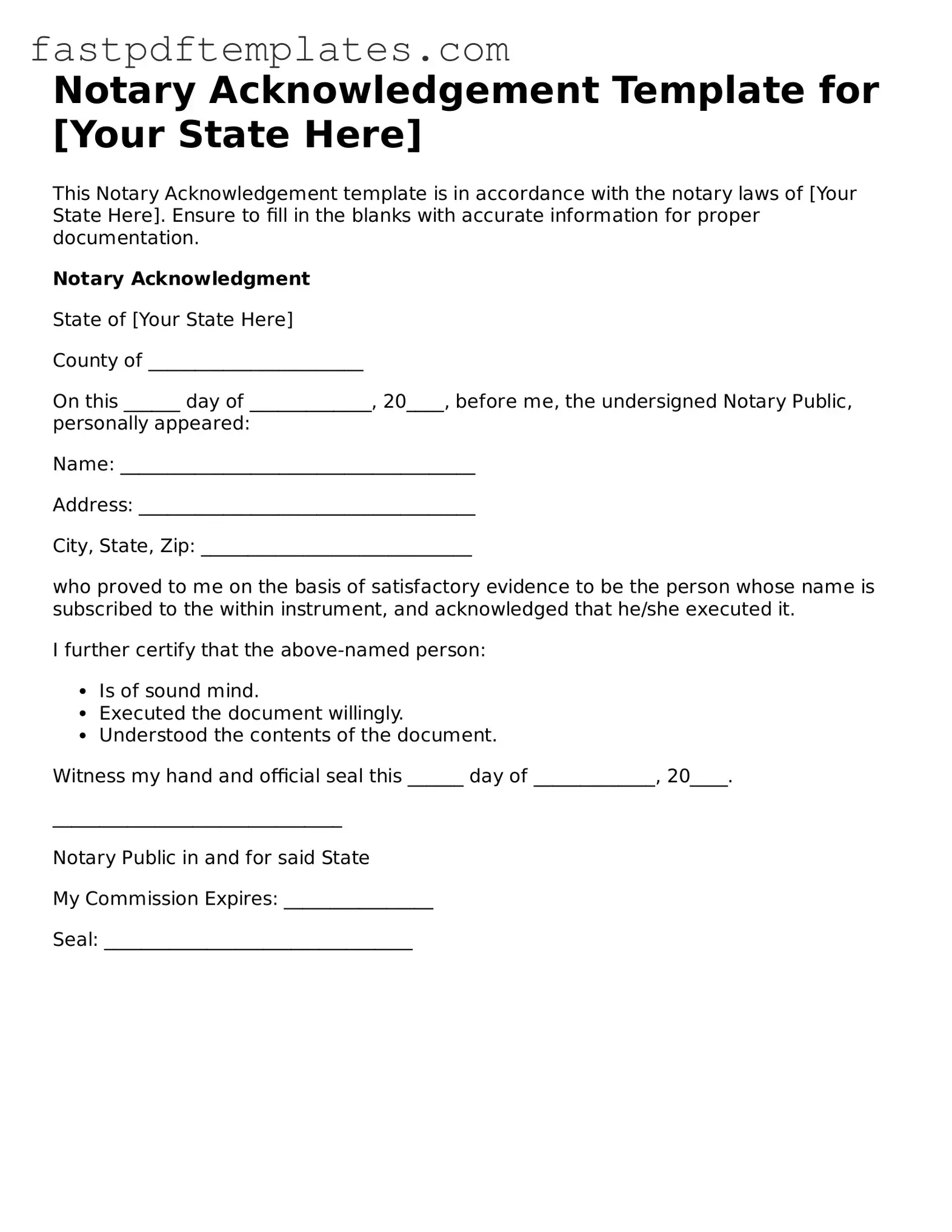Notary Acknowledgement Template for [Your State Here]
This Notary Acknowledgement template is in accordance with the notary laws of [Your State Here]. Ensure to fill in the blanks with accurate information for proper documentation.
Notary Acknowledgment
State of [Your State Here]
County of _______________________
On this ______ day of _____________, 20____, before me, the undersigned Notary Public, personally appeared:
Name: ______________________________________
Address: ____________________________________
City, State, Zip: _____________________________
who proved to me on the basis of satisfactory evidence to be the person whose name is subscribed to the within instrument, and acknowledged that he/she executed it.
I further certify that the above-named person:
- Is of sound mind.
- Executed the document willingly.
- Understood the contents of the document.
Witness my hand and official seal this ______ day of _____________, 20____.
_______________________________
Notary Public in and for said State
My Commission Expires: ________________
Seal: _________________________________
